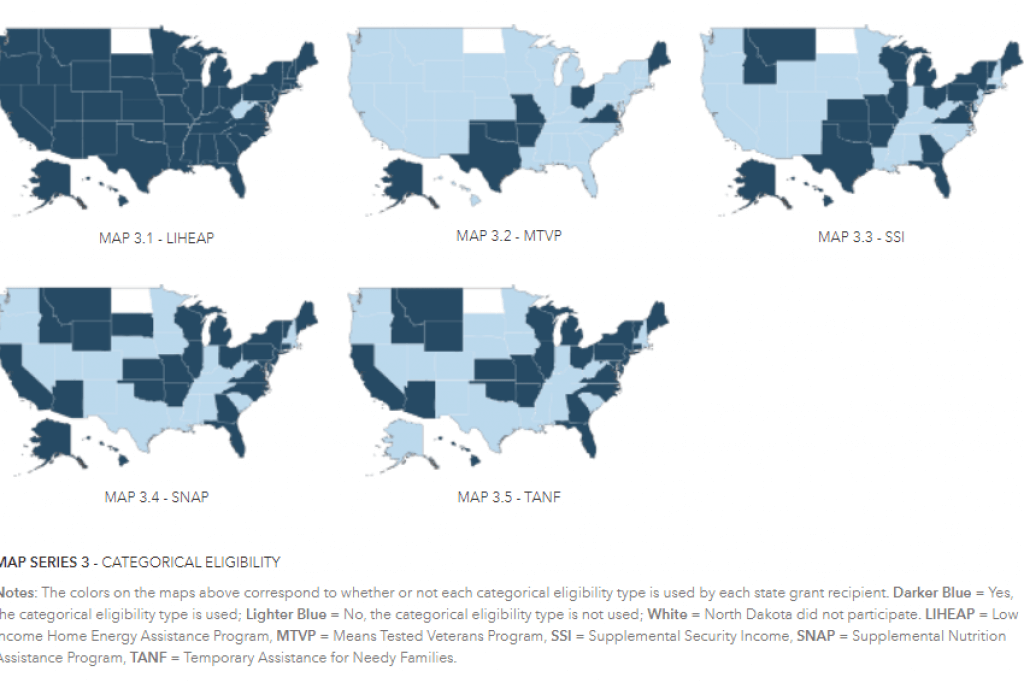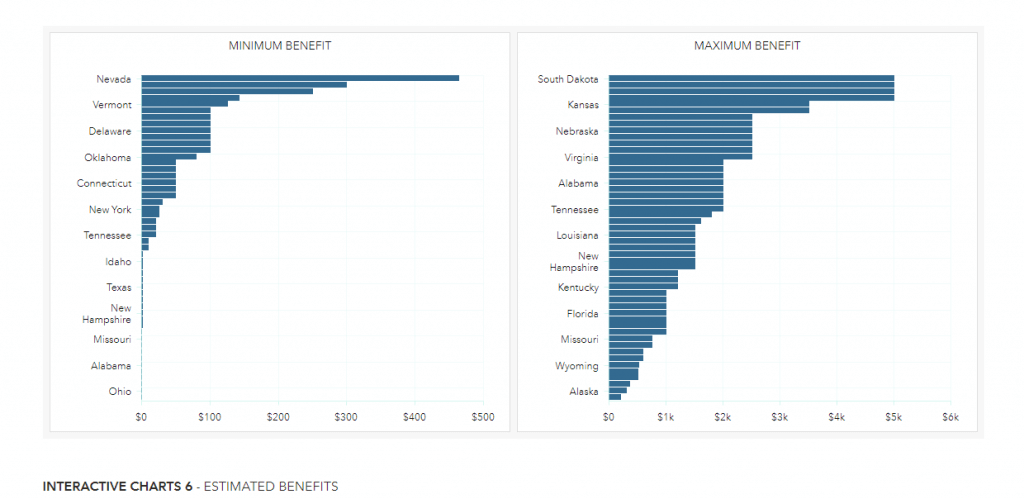Low-Income Household Water Assistance Program Updates
LIHWAP, the Low-Income Household Water Assistance Program created and funded through COVID-19 legislation in December 2020 (CAA) and March 2021 (ARPA), is now in full swing, with households across the country accessing assistance in 42 states (data on tribes and territories will be updated in May). Households may apply for assistance to restore disconnected water services, prevent pending disconnections of water services, and/or to reduce rates for their current water bills.
The Health and Human Services’ (HHS) Administration for Children and Families’ Office of Community Services (OCS) administers the program. HHS recently released a public LIHWAP Data Dashboard summarizing the program’s implementation plans, trends, challenges, and support, as well as states’ quarterly reports and trends. River Network, along with partner organizations, submitted public comments to HHS on what grant recipients should include in quarterly and annual reports in December 2021; these recommendations included sharing collected data in an online dashboard.
Highlights from HHS:
- LIHWAP grant recipients have entered into agreements with over 5,000 water and wastewater service providers (there are over 50,000 water utility vendors across the country).
- LIHWAP has already served over 85,000 households.
- Because LIHWAP is considered an emergency program, it was designed with a streamlined process, including “categorically eligibility,” meaning that a household automatically qualifies based on the requirements of income eligibility for other programs, including:
- Low Income Home Energy Assistance Program (LIHEAP),
- Means-tested Veterans Programs (MTVP),
- Supplemental Security Income (SSI),
- Supplemental Nutrition Assistance Program (SNAP), and/or
- Temporary Assistance for Needy Families (TANF).
This image shows how states are determining categorical eligibility. Some states, such as Arkansas, Maryland, Missouri, Ohio, Oklahoma, and Virginia, include all five programs as a means to qualify for LIHWAP, while other states such as Colorado, Alabama, Indiana, and Minnesota only consider LIHEAP recipients (and some states consider some other combination).
Vulnerable populations are prioritized for water assistance by grant recipients in the form of benefit amounts, early application periods, or other methods. Vulnerable populations include:
- People with disabilities,
- Households with young children (0-5),
- Older adults (60-years-old or older), and
- Households with high water burden.
62% prioritize children 0-5, 64% prioritize seniors 60 and older, 64% of states prioritize people with disabilities, 72% prioritize households with high water burdens, and 36% have included other target groups in their prioritization.
Data Dashboard Shows Great Need for Program, Trends, and Challenges
The LIHWAP Data Dashboard currently only shows data from the first quarterly report- the next one, covering January 1-March 31, 2022, is due on April 29, 2022.
Based on the first quarterly report, the top challenges identified by grant recipients include “increasing water utility vendor participation, modifying data systems, and funding needs.”
5,000 water utilities are currently participating in the program- that’s only a tenth of all utilities in the nation. The Office of Community Services plans to continue offering webinars and training to encourage participation. Small and rural water vendors are reporting more difficulties- they lack resources and capacity to confirm account payments. According to HHS, “both small and larger vendors have noted the challenge of modifying their IT systems to accommodate the new LIHWAP program when there is not a permanent authorization for LIHWAP.”
Unsurprisingly, the need for water assistance exceeds the resources currently available through LIHWAP. Many state recipients are unable to assist households who need help keeping up with their current bills as they prioritize households that are disconnected or at risk of being disconnected. OCS provided guidance to coordinate services with the Community Services Block Grant and other federal programs, and is tracking the need for more funding.
States that have begun dispersing funds to households show a wide range in benefit amounts. The two charts above show the minimum and maximum levels. Minimum benefits range from $0-$464 (Nevada) and the maximum benefit ranges from $200 (Massachusetts) to $5,000 (South Dakota), with an average maximum benefit of just over $2,000. The dataset currently only includes data from 17 states.
For context, the average water bill debt for Californians in 2021 was $500. A Circle of Blue report in 2020 found that water debt in 12 major US cities ranged from an average of $79 in Denver to $662 in Philadelphia.
The Future of LIHWAP- Questions around Administration, Funding, and Duration of Program
The LIHWAP program initially received $1.138 billion as an emergency, short-term program that will end in 2023. President Biden’s FY 2023 proposed budget does not include direct funding for this program. Instead, the proposed budget includes an increase to the well-established Low-Income Household Energy Assistance Program (LIHEAP), also housed at HHS, to “advance the goals of both LIHEAP and LIHWAP” by giving states discretion in choosing to use some LIHEAP funding to provide water bill assistance. Advocates do not want to pit assistance for essential services against each other to compete for funding, which this proposed approach would ultimately do as the suggested funding is not enough to meet the need of both services. In the short term, we hope to see investment in HHS’ LIHWAP to continue to provide relief to families at risk of disconnection and to those facing insurmountable water bill debt, with a $500 million investment in FY 2023.
Another program established through the Infrastructure Investment and Jobs Act (IIJA), the Rural and Low-Income Water Assistance Pilot Program, holds potential as an opportunity to set up a permanent water assistance program within the EPA. The pilot program is designed to award grants to assist qualifying households to maintain access to drinking and wastewater treatment in the next two years. It wasn’t funded through the IIJA and was not included in the President’s budget, and River Network is advocating for an initial $225 million appropriation in FY 2023.
Why switch from funding a program at HHS to creating a new one at EPA? There’s been back and forth on the merits of keeping the current emergency water assistance program at HHS permanently vs. developing a new program administered by the EPA. Within the network, many advocates working on this issue have a preference to house a permanent program at EPA since the agency is more familiar with the function and many needs of water utilities across the country and can ensure compliance with water quality issues and enforce standards over the long term.
Are you advocating for either or both of these water assistance programs? What’s your experience been in your state as LIHWAP gets off the ground? We want to hear from you! You can join the Drinking Water Access Exchange in River Network’s online community to attend monthly calls. Reach out to Sheyda Esnaashari to get involved.
-
[…] our blog to learn more about River Network’s SRF and LIHWAP work and learn more about the Clean Water Act Owner’s Manual […]
[…] LIHWAP, the Low-Income Household Water Assistance Program created and funded through emergency Covid-19 legislation in December 2020 (Consolidated Appropriations Act (CAA)) and March 2021 (ARPA (American Rescue Plan Act)), is the first national water assistance program of its kind. We previously covered some of the basics of the program and an update on how the first round of implementation data provided by states through quarterly reports demonstrated the successes and challenges of the program. You can check out that blog post here. […]
[…] Low-Income Household Water Assistance Program Updates, May 2022 […]
[…] Low-Income Household Water Assistance Program Updates, May 2022 […]
Leave a Comment








Hi Erin, this is so wonderful and helpful. I didn’t know about this program. Very unlike Ohio, all 5 of the programs for qualification are available here. Do you know if there is a information flyer, or tips on how to navigate the process of accessing the funds? I am working on a water equity project in Dayton, Oh. and would like to help spread the word in low income communities about this program. Thank you so much for writing this article.
Hi Cheryl, I’m glad the blog is helpful to you! The Ohio Department of Development and local energy assistance providers are running to program- it might be helpful to reach out to them to see if they have flyers or other communications that you could share. I am pasting some helpful links here, if you have other questions you can email me at ekanzig@rivernetwork.org. Thanks!
https://development.ohio.gov/individual/energy-assistance/ohio-household-water-assistance-program
https://breathingassociation.org/wp-content/uploads/2022/01/COB-808-Water-Crisis-Program-Flyers-HEAP-Main-Office.pdf
Hi there! I have an inquiry from Arkansas. What can I do if I qualify thru multiple eligibility requirements, but my vendor is one of the very few in Arkansas that has yet to “get with the program”. Which isn’t supposing considering they also do not offer online payments or even the option to pay by card. They except cash only paid at the water department in person. My water has been disconnected, but can’t seem to find any answers.
Hi Ashton, thanks for reaching out, I’m sorry to hear that your water has been disconnected. I would encourage you to call your state’s program (888-985-6441) to find out if you can get assistance despite your water utility not participating in LIHWAP.
Very helpful, thanks for sharing this well written post.
Here in Massachusetts the LIHWAP program is mostly being kept a secret. I recently heard from the MA Director of Community Development who is running the MA LIHWAP program. He wrote that city and town water departments aren’t submitting required information requested by the LIHEAP agencies. They are getting stonewalled. So my gut feeling is that many MANY households will never get access to LIHWAP funding in Massachusetts. MA cities and towns have zero incentive to cooperate. Why? Because they can homes over unpaid water bills instead. Very lucrative. And notice how MA has the lowest maximum pay out of all states participating——$200. https://www.pewtrusts.org/en/research-and-analysis/blogs/stateline/2019/03/04/where-unpaid-water-bills-can-mean-losing-a-home